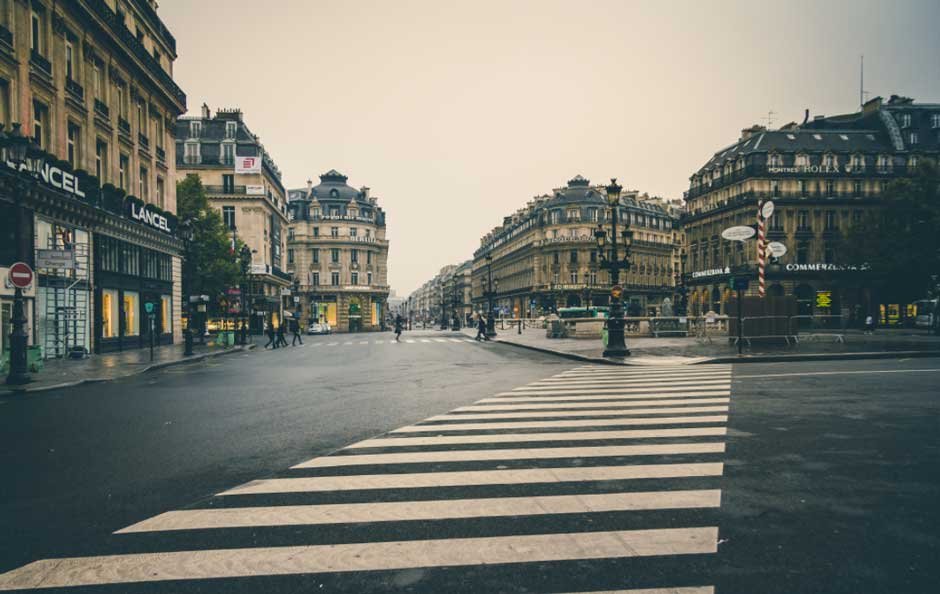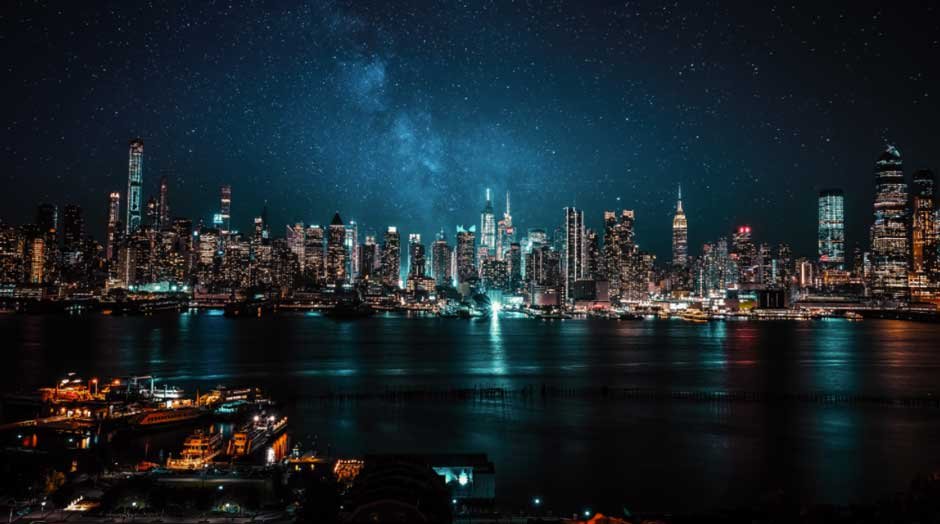Cityscape photography is one of the most accessible genres. The shapes and intricate details in urban views appeal to the human eye because our brains recognize and think in terms of patterns. Nevertheless, creating an impressive cityscape photograph can be a challenge, especially if there are many people in the frame. This is where the Photoshop content-aware fill tool comes in handy, so if you want to learn more about it, go to Skylym’s blog.
So, you don’t have to leave the city to find landscapes. The genre of landscape photography is also available to residents of megalopolises. Wide-open perspectives are not limited to mountains, oceans, and endless fields. Skyscrapers, old neighborhoods, and other man-made structures are the subjects of cityscape photography.
Additionally, during the winter season, the cityscape takes on a unique charm with glistening snow on the ground and festive decorations adorning the buildings, making it an ideal time to capture stunning winter cityscape photographs.
The Main Rules of Cityscape Photography
The most basic rule of cityscape photography is to minimize the presence of people in the frame. In the traditional landscape genre, the main subjects are the sea, mountains, plants, and sky. In cityscape, it’s houses, bridges, and streets. As soon as you put people in the frame, your image becomes street photography.
To get the most out of where you want to shoot, start by exploring the area. Walk around the location at different times of the day and look at your subjects from different angles. If you find the perfect shot but there are people in it, you can always use the Photoshop content-aware fill tool.
There is another important aspect. In urban environments, structures are large and space is limited. A single building on a shot can be boring. Putting one subject in the foreground and another in the background is an effective way to make your landscape photos more interesting.
How Can You Make Cityscape Photo More Impressive?
Maybe you’ve had situations where you got a great shot, but felt like something was missing. We’ll give you the best tips to make any cityscape look great and keep the viewer interested. Also, don’t forget that some locations look better without people, and if you miss the right moment, just use Photoshop fill content-aware tool, this is very easy.
Modern Architecture and Different Lines
Many photographers focus only on historic architecture and straight lines, but that’s not quite right. We need to open up new spaces for creativity. Modern structures are mostly straight lines, much like what we look for in nature when photographing ordinary landscapes. But there are exceptions to every rule, and some designs have curved lines. With a versatile lens like the Tamron 28-200 Sony, you can capture these unique contrasts by looking for curves, combining them with straight lines, and adjusting your perspective until you find the most striking composition. Become a creator of interesting cityscape compositions.

Watch for Changes
If you plan to develop in the cityscape genre, document the changes in the city through photography. Keep an eye on building in your neighborhood. Find a construction or redevelopment site and take pictures once a week. The chronology will be valuable in a few years when the old town becomes history.
Also, try to find streets where the old architecture is squeezed into the new modern style. Look for places where the skyscrapers look like decorations for the unique old house. This looks very effective because you have time to capture the changing city and emphasize the beautiful tandem of old and new.
Eliminate Distractions
Cities are often dense and chaotic, making it difficult to get a clear shot of your subject. In many ways, learning how to effectively remove distractions from your images is a sign of a skilled photographer. Here are a few tips to help:
- Find a bridge, ladder, or other elevated location.
- Use a telephoto lens to isolate your subject from the rest of the scene.
- Use a slow shutter speed to blur moving objects.
- Cut out unnecessary details.
- Beware of distracting cloud formations.
If you need to remove distracting objects from the background and don’t know how to do content-aware fill in Photoshop, follow the link at the top of this article to Skylum’s blog page. Also note that this developer has a state-of-the-art photo editor, Luminar Neo. It is AI-based, so it will help you remove unwanted objects from your photo in just a few clicks.
Pick the Perfect Time
Early morning is the best time to photograph the cityscape. The streets are cleaner, there are fewer billboards near stores, and the air is clean and fresh. And of course, there will be very few people in the city. The lack of distractions will allow you to focus on objects and freely choose the best angle. Choose Sunday morning, when most of the residents are sleeping peacefully in their beds.
The soft golden light is a bonus. The lines are smooth, the tones are calm. The morning light adds a kind of magic to the image and the shot was taken at dawn and is filled with serenity and peace.
Another option is the blue hour. This is the time between sunset and total darkness. During this time, the light in the sky changes quickly from daylight to darkness and is ideal for capturing city lights.

The Sky and Reflections
Include the sky in your cityscape photography. Shoot when the skyline is full of beautiful clouds. Also, try long shutter speeds for a stunning motion effect. Take a few photos in normal mode and then in monochrome mode and compare. Shooting the sky with clouds between the skyscrapers is advantageous in black and white.
Also, take benefit of a large amount of glass and reflective surfaces in modern buildings. Move around and try different angles. Reflections can be found in water. For example, skyscrapers look very impressive in the blue hour with a pond in the foreground.

